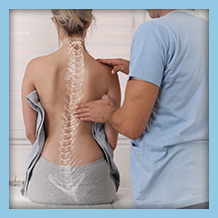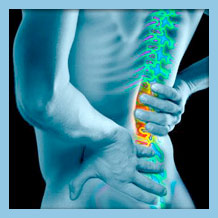

Back pain is one of the most common medical complaints, affecting individuals of all ages. Whether it’s a dull ache or sharp, severe pain, back pain can significantly impact your daily life and well-being. At Orthopedic & Laser Spine Surgery, we offer a wide variety of back pain treatments designed to target the underlying causes and provide lasting pain relief. Our minimally invasive procedures, tailored rehabilitation programs, and conservative care options aim to restore comfort and mobility.
Back Pain Treatments
Orthopedic & Laser Spine Surgery specializes in advanced, minimally invasive surgical solutions. These treatments are designed to reduce tissue damage and provide quicker recovery compared to traditional surgical methods.
Top Spine Surgery and Back Pain Procedures at OLSS
- Transforaminal Lumbar Interbody Fusion (TLIF): TLIF is a surgical procedure that stabilizes the spine by fusing two or more vertebrae. It involves removing a damaged disc and replacing it with a bone graft or synthetic spacer through a small incision, helping to relieve pressure on nerves and reduce pain.
- Lumbar Laminectomy Surgery: A laminectomy involves removing a portion of the vertebral bone, called the lamina, to create more space for the nerves. This procedure is often used to treat spinal stenosis and reduce pressure on the spinal cord and nerve roots, alleviating symptoms like pain, weakness, and numbness.
- Lumbar Fusion: Lumbar fusion is a procedure where two or more vertebrae are permanently joined together to eliminate movement between them. This is commonly recommended for severe cases of degenerative disc disease or spondylolisthesis to stabilize the spine and relieve chronic pain.
- Lumbar Disc Replacement: Also known as artificial disc replacement, this surgery involves removing a damaged disc in the lower back and replacing it with an artificial one. It allows for greater mobility compared to traditional fusion surgery and can be a suitable option for patients with specific conditions who require motion preservation.
- Coccygectomy: A coccygectomy is the surgical removal of the coccyx (tailbone) when conservative treatments for chronic tailbone pain have failed. It’s often recommended for those who experience persistent pain in the coccyx due to injury or degeneration.
- Minimally Invasive Surgery: Many back surgeries, including TLIF and lumbar laminectomy, can be performed using minimally invasive techniques. These procedures involve smaller incisions, less tissue damage, and faster recovery times compared to traditional open surgeries.
Nonsurgical Treatments for Back Pain Relief
For many individuals, nonsurgical approaches can provide significant pain relief and improve quality of life. Our team at Orthopedic & Laser Spine Surgery often begins with conservative, back pain relief options before recommending surgery. Common nonsurgical treatments include:
- Steroid Injections: Injections of corticosteroids can reduce inflammation and pain in the lower back. These injections are often used in conjunction with other treatments to provide temporary relief while long-term strategies are put in place.
- Pain Relievers and Muscle Relaxants
Over-the-counter pain relievers, such as acetaminophen or nonsteroidal anti-inflammatory drugs (NSAIDs), may help reduce inflammation and ease mild to moderate back pain. In some cases, muscle relaxants are prescribed to relieve muscle tension and spasms, providing additional comfort during flare-ups. - Alternative Treatments
Some patients may benefit from alternative treatments, such as acupuncture, tai chi, or transcutaneous electrical nerve stimulation (TENS). These therapies can enhance blood flow and disrupt pain signals to provide relief. - Hot and Cold Therapy
Applying cold packs can reduce swelling, while heat can relax tight muscles and improve flexibility. These simple remedies can be effective when used consistently. - Maintaining a Healthy Weight
Carrying excess weight can put additional strain on the back muscles and spinal column. Maintaining a healthy weight through a balanced diet and regular exercise can reduce back pain and prevent future flare-ups.
Common Causes of Chronic Back Pain
Chronic back pain is a persistent condition that lasts for 12 weeks or longer, even after the initial injury or cause has been treated. This type of pain often requires a multi-faceted approach to manage effectively. Common causes of chronic back pain include:
- Herniated or bulging discs occur when the disc material presses against the nerve roots, leading to nerve irritation and chronic pain.
- Spinal stenosis is a narrowing of the spinal canal, which can put pressure on the spinal cord and nerves, leading to back pain and discomfort.
- Degenerative disc disease breaks down discs over time, leading to chronic pain, stiffness, and reduced mobility.
- Facet joint dysfunction is the inflammation or irritation in the small joints between vertebrae, leading to localized back pain.
- Muscle strain and sprains happen due overuse, poor posture, or sudden movements that can lead to muscle injury, causing chronic discomfort.
- Traumatic injuries including broken bones can result in long-term back pain, requiring specialized medical treatment.
Signs Your Back Pain is Getting Worse
Experiencing back pain can be challenging, but there are warning signs to watch for if your pain affects your daily life:
- Pain Persists: If pain continues for more than a few weeks, it’s crucial to seek medical advice.
- Pain Affects Normal Activities: Struggling to perform everyday activities, such as walking or bending, may indicate a severe condition.
- Feel Worse After Rest: If you experience pain worse after periods of inactivity or bed rest, it might suggest an underlying issue.
- Other Symptoms Develop: Other symptoms, such as numbness, weakness, or radiating back pain, can be signs of nerve involvement.
Maintaining a Healthy Lifestyle to Prevent Back Pain
In addition to surgical and nonsurgical treatments, a healthy lifestyle plays a crucial role in preventing back pain. Consider these habits to support spinal health:
- Exercise Routine: Include activities that strengthen your core muscles and promote flexibility.
- Healthy Diet: Focus on anti-inflammatory foods that support muscle recovery and promote spinal health.
- Good Posture: Avoid poor posture during daily activities, and make adjustments to your workspace to reduce strain on your back.
- Avoid Heavy Lifting: Use proper techniques when lifting objects to prevent injury.
Importance of Early Diagnosis and Proper Treatment
Getting an accurate diagnosis early on is essential for managing chronic back pain effectively. Your medical history, physical examination, and magnetic resonance imaging (MRI) are all part of developing an effective treatment plan. Early intervention can often prevent conditions from worsening and limit the need for invasive surgical procedures. Seeking a second opinion can provide additional clarity, confirm the diagnosis, and ensure that you’re exploring the most effective and least invasive treatment options available for your specific condition.
Frequently Asked Questions About Treating Back Pain
What is the recovery time for minimally invasive back surgery?
Recovery varies by procedure but is typically faster than traditional surgery. Many patients can return to daily activities within a few weeks, with full recovery often achieved in a few months.
Are minimally invasive surgeries as effective as traditional back surgeries?
Yes, minimally invasive procedures offer similar, if not better, outcomes with advantages like smaller incisions, less scarring, and shorter recovery times.
How do I know if I’m a candidate for a specific back surgery?
A comprehensive evaluation, including imaging tests like X-rays or MRIs, will help determine the best treatment. Our experienced orthopedic surgeons tailor each recommendation to the patient’s unique condition.
Will I need physical therapy after surgery?
Physical therapy is often recommended to enhance recovery, improve mobility, and strengthen the affected area post-surgery. Your surgeon will discuss an appropriate rehab plan during your follow-up appointments.
What are the risks of spinal surgery for chronic pain?
Minimally invasive spinal surgery carries fewer risks than traditional approaches, but there is still a chance of infection, bleeding, or incomplete pain relief. It’s essential to discuss any concerns with a healthcare professional before deciding on a procedure.
How can physical therapy help with chronic back pain?
Physical therapy offers customized exercises designed to target the source of your back pain. This can involve stretches to increase flexibility, strengthening routines to stabilize the spine, and techniques to enhance overall mobility. Your physical therapist may also teach you how to use your body properly to avoid further injury.
Will physical activity make my back pain worse?
Physical activity can initially cause discomfort, but over time, regular exercise often reduces pain levels. It’s crucial to exercise regularly under guidance to strengthen your core muscles and improve back health without worsening the pain.
When should I consider surgical treatment for chronic back pain?
Surgery is typically considered when conservative methods like physical therapy, medications, and lifestyle adjustments have failed to provide adequate relief, and the pain interferes with daily life. Consulting with a healthcare professional will help you understand your options.
Back Pain Doesn’t Have to Control Your Life
Back pain can be debilitating, but it doesn’t have to be a permanent part of your life. With our advanced, minimally invasive techniques and personalized care, we strive to relieve pain with solutions tailored to your unique situation.
Don’t let back pain interfere with your daily activities—seek professional help today. Call Orthopedic & Laser Spine Surgery at (866) 272-9271 or fill out our contact form to schedule a consultation. We’re here to help you return to the active lifestyle you love.
